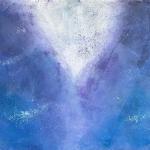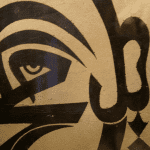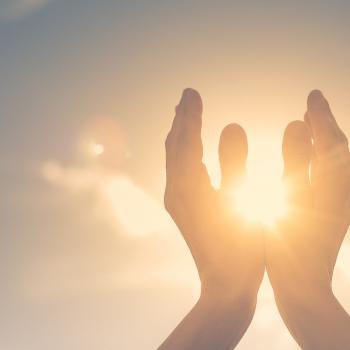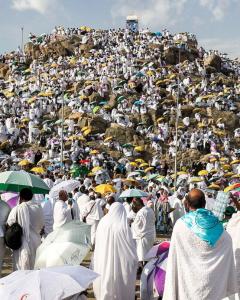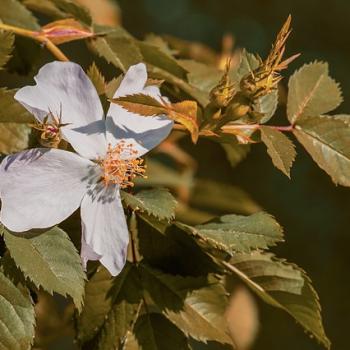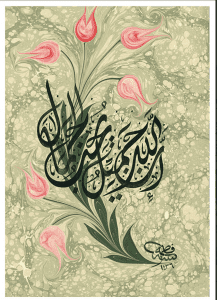
What if Muslims who are in positions of religious authority acted as if Allah is Beautiful and loves Beauty? All too often Muslim religious leaders are actually in opposition to beauty and its expressions in our lives.
Recently, an incident caused me to reflect upon our faith and its dominant expression in Islamic institutions, venues, and media.
A dear friend of mine was holding a workshop on the Ninety-Nine Names of God for Muslim children. He was telling the children they were going to sing songs. A 7 year old boy interrupted him and vehemently proclaimed that Muslims don’t sing songs, they sing Nasheeds! The brainwashing of this young soul is characteristic of the dominant falsehood upheld by authoritarianism, and firmly embedded in our Mosques and schools, that music and most art forms are forbidden (Haram).
This incident reminded me of my own children’s experience with this kind of oppression. When my daughter was about 7 years old she came home from the weekend Islamic school looking distraught and asked me, “Baba, is drawing Haram? Will I go to hell because I like drawing pictures of people?” When I heard my daughter say this my heart sank and I assured her that she didn’t have to worry about this at all. I told her that her drawings were beautiful and encouraged her to continue. We eventually took her and the rest of our children out of that Sunday school in order to avoid any further poisoning of their minds and deadening of their hearts.
What if…
- instead of depriving our children of their natural creativity and innate desire to express beauty we actually taught them that music and art are among the most important expressions of divine beauty that is manifest through human beings?
- we taught them that the recital of the Quran is a form of musical expression that is based on the classical Arabic music scales called Maqams that are used in all forms of Middle Eastern music, and that the best reciters of the Quran attend music school to learn how to recite?
- we taught them that Prophet David was a beautiful singer and that the Quran says that the mountains and the birds sang along with him?
- we taught them that the Azhan, when properly done, is sung out according to a particular musical Maqam at each time of the day?
- we taught our children that art is an expression of Tawheed as the artist’s heart and the medium of its expression become one?
- we taught them that music, both instrumental and vocal, chanting and movement have been an important dimension of the most profound spiritual expressions among Muslims since the beginning?
- we taught them that beauty, Ihsan, is the highest expression of our faith and we encouraged them to find ways to express their own beauty so they can become the best Muslims?
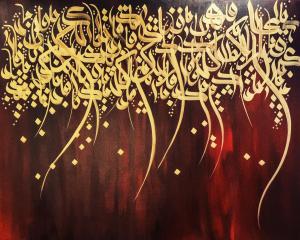
This incident reminded me of some of my own experiences. Years ago, I was leading a Quranic study group in which I explored different interpretations of Quranic verses to understand the metaphors of the Quran and how their spectrum of meaning can help guide our inner journey to help us to know our selves. In this class, I referred to the writings of some of the great Sufi masters about the Quran and its esoteric interpretation to help people expand their perspective on the Quran.
The initial response of the group was very positive as people felt free to explore, interpret and understand how the Quran can offer meaningful guidance to their lives. There was a palpable expansiveness as people felt the real possibility of engaging with the Quran in a personal and meaningful manner.
Then, authoritarianism intervened to close down such possibilities. A Quranic scholar in attendance questioned my “authority” and “qualification” to interpret the Quran – only scholars could do that! He questioned the use of Sufi writings as a source for understanding the Quranic verses, “mainstream” sources should be used instead. Suddenly, fear set into the group and doubt about the “permissibility” of what we were doing shrouded them. A palpable contraction set in and people withdrew into the safety of obedience to authority.
What if…
- instead of shutting down the group, the person who was a perceived authority had encouraged further exploration by the group?
- he had asked some questions to help them go deeper into the heart of the Quranic verses and see what insights could come of their inquiry together?
- this “authority” had encouraged truth-seeking and authentic pursuit of wisdom instead of putting up the barrier of authority in their faces? What understanding may have come to people that could help them in the work of healing their wounded hearts?
It seems that nowadays, we Muslims are beset with confining rules, taboos, and stifling doctrines that have all but snuffed out creativity, inquiry, exploration, and self-realization from our lives. We seem to have become strapped in an authoritarian straight jacket woven of deleterious prohibitions, cultic jargon, oppressive attire, and ludicrous etiquette that we are told somehow gives us the proper “Muslim” credentials. All too often I come across situations where people are zealously acting or talking “Islamically” and spewing out edicts about what is Islamically permissible and what is forbidden.
I see this phenomenon as the outward symptom of the disease of authoritarianism and its debilitating structures that have come to dominate mainstream Islam. The effect of this disease has resulted in fear, guilt, prejudice, close-mindedness, false pride, and a dearth of expression of the beauty of the human spirit. Authoritarianism has turned many of us from seeking and expressing beauty into walking, talking expressions of passive obedience, rote repetition, and fanaticism. In short, authoritarianism and its indoctrinating current has turned us towards ugliness.
It is heart-aching to see the effect of authoritarianism and its apparatus of indoctrination on our communities. The puritanical form of Islam that has been imposed upon most of our communities throughout the world since the 1970’s has emasculated our creativity and placed our youth in a terrible contradiction between being Muslim and living their lives in an authentic way that is rooted in beauty, exploration, and discovery. This is particularly acute in Western societies where many young Muslims are forced to live dual lives.
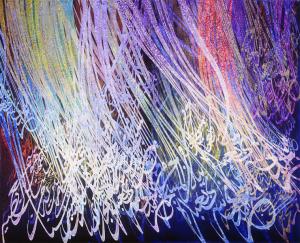
It’s time for us to offer a better alternative. It’s time to broadly reintroduce our Islamic artistic heritage to our youth and to offer them the possibility to discover an Islam that is rooted in the innate beauty of the human spirit.
We have so many beautiful examples in our history of the most profound expressions of beauty in artistic form. From the exquisite heart-opening poetry of such spiritual masters as Rumi, Ibn Al Farid, Ibn Arabi, and Hafiz to the breathtaking artwork of structures such as Alhambra Palace, the Blue Mosque, and the Taj Mahal, to the soul-lifting music and movement of the Mevlevi Sema and Whirling Ceremony.
And because the soul’s longing for beauty cannot be extinguished, “no matter how much the deniers hate it,” in our times we continue to be blessed with stunning, creative, and innovative expressions of beauty by contemporary Muslims who are rediscovering and rendering anew in different mediums and styles traditional forms such as literature, Quranic calligraphy, geometric art, and music. Here are just some of the ones whose work is worth getting to know:
Asad Ahmad Ali: https://sufism.org/product/civilization-of-paradise,
Camille Adams Helminski: https://sufism.org/product/ramadan-love-songs,
Fatma Al-Bagali: http://www.fatmasaeed.com
Adil Abedi: https://www.facebook.com/529769713742226/photos/a.529784537074077/1398929406826248/?type=3&theater
Vaseem Muhammed: http://vaseemmohammed.com
Joumana Medlej: http://majnouna.com/portfolio
Lateefa Spiker: http://lateefaspiker.co.uk/gallery/artworks
Ahmed Moustafa: http://www.fenoon.com/portfolio/portfolio.html
Saif Adam: https://www.youtube.com/watch?v=_-T5U0IYgkw
Maher Zain: https://www.youtube.com/watch?v=f4J7-WR1QOY

